April 13 Back in Penguin (Day 199)
We went back into the town of Penguin today for resupply and free wifi for an hour.
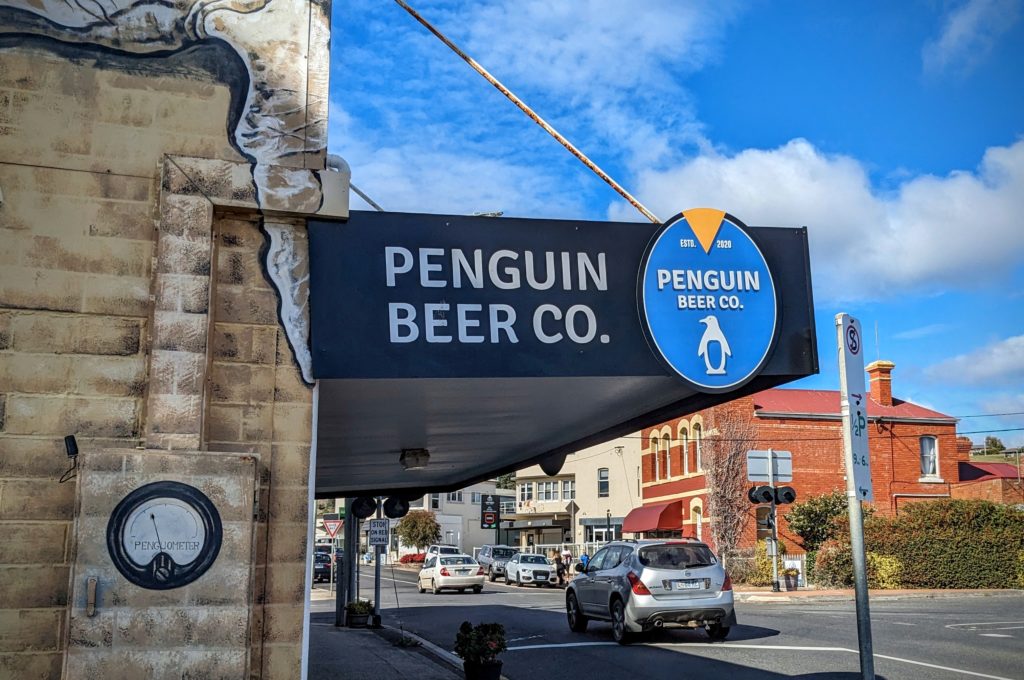
The free wifi spot is next to the Brew Pub, unfortunately we were there about 3 hours too early!

The park where we fill with potable water has a great beach!
We returned to the Midway Point camping site for another free night to wait out the windy conditions.
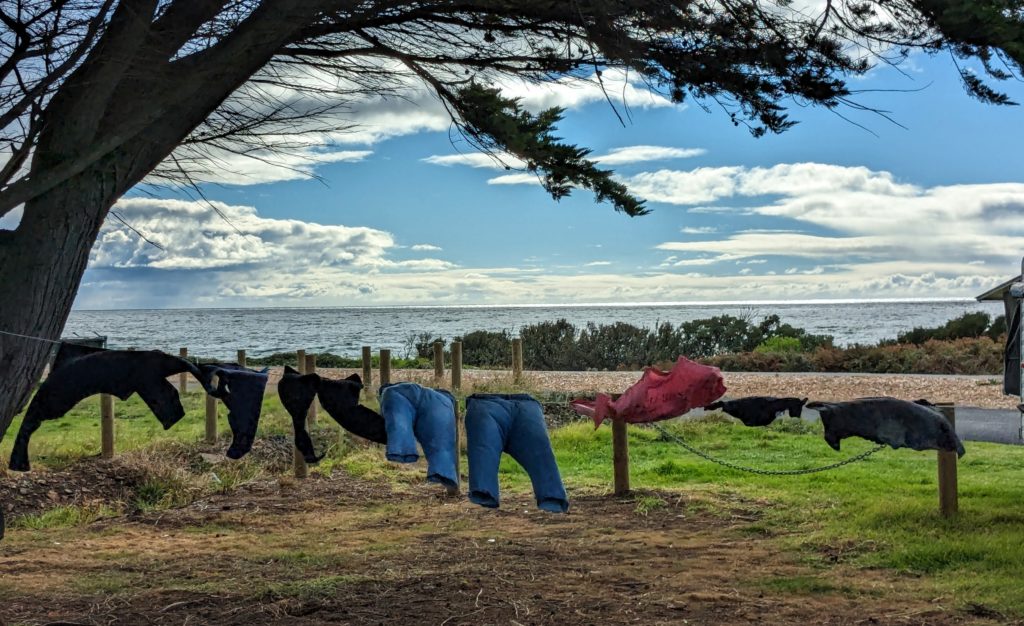
The neighboring campers had their laundry drying on the line, great wind socks (pants)!
April 12 Highfield (Day 198)
We started the day going into Smithton to shop, get water and dump and we noticed the Tarkine Oyster shop across the Duck River inlet! Of course we had to have some lunch!
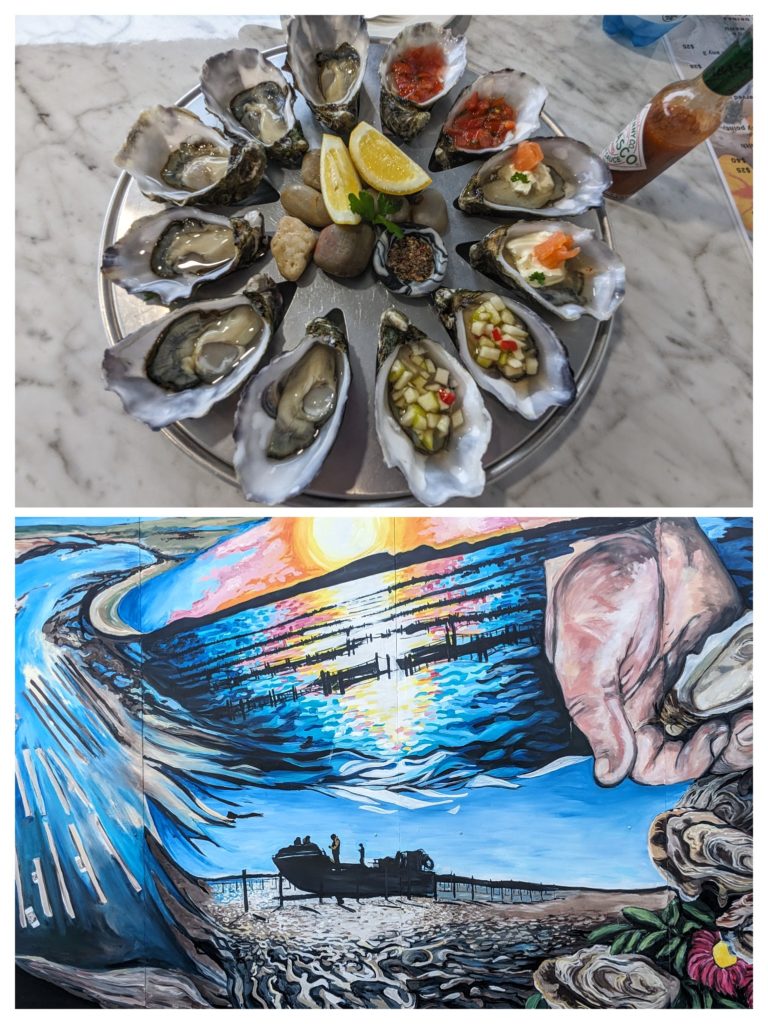
Our first tray of 6 ‘au naturelle’ and 6 raw with a variety of toppings. We decided to do another dozen, half with the mignonette and half with the salmon and creme fraise! The mural outside the building was quite striking!
After our wonderful raw lunch we headed up to the 3rd ‘cape’ on the north coast, to the small town of Stanley that is at the base of “The Nut”, a flat topped volcanic butte similar to the Table Cape we visited on April 9. It was a raw, cool windy day so we headed to the historic site of Highfield to do some indoor exploring.
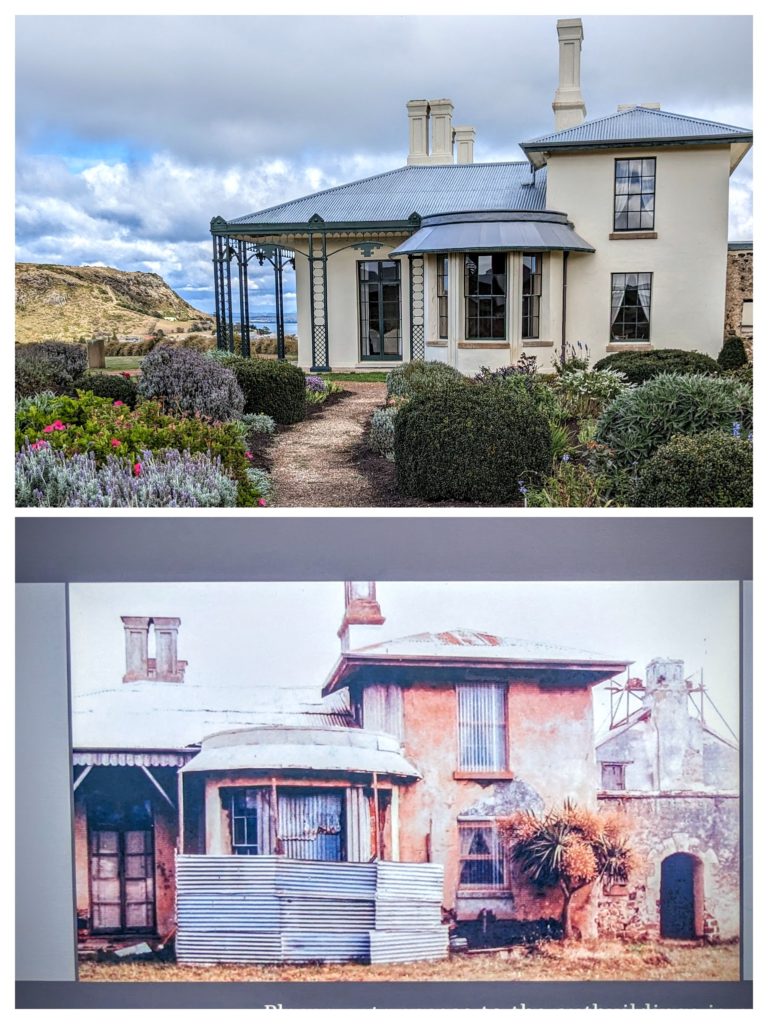
The estate as it is today after extensive renovation, and the estate as it was in 1990 when it was acquired by the Parks and Wildlife Service.
Highfield was the headquarters of the Van Diemans Land Company and was constructed in 1826 mostly by convict (slave) labor! It is a wonderful example of early colonial architecture and a testament to the horrible practice of transportation to “the ends of the earth” for minor crimes and subsequent slave labor practices.
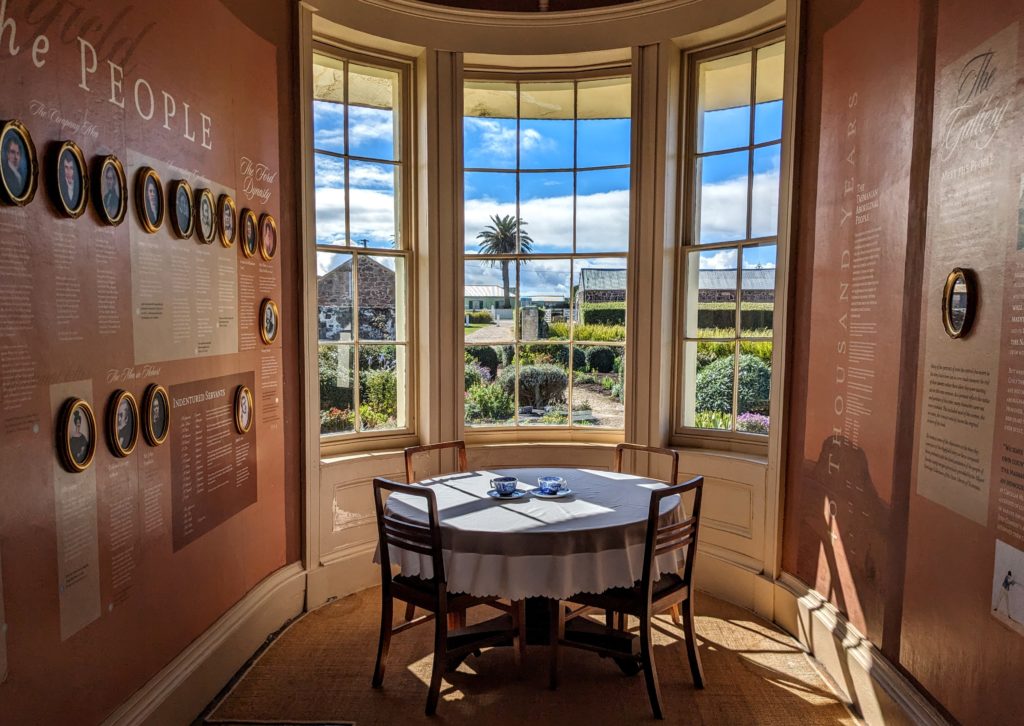
The Gallery, where visitors were greeted. Now it serves to introduce visitors to the main characters of the colonial period here.
The Parks Service does not sugarcoat the history here. The Van Diemans Land Company began their holdings here in 1826 and by 1834 the last remaining 134 Aboriginal people were banished to Flinders Island and nearly all were dead by 1850. The main architects of this program were the leaders of the Van Diemans Land Company.
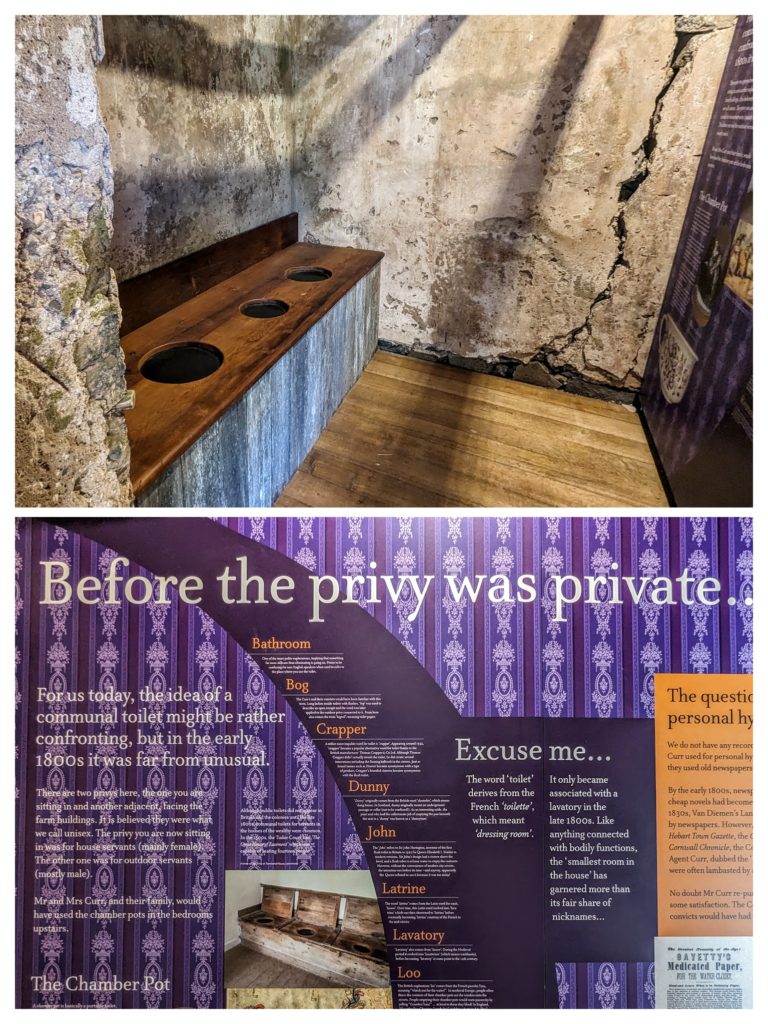
The most important room in (actually outside!) the house! And some very interesting history of “the ‘loo”!
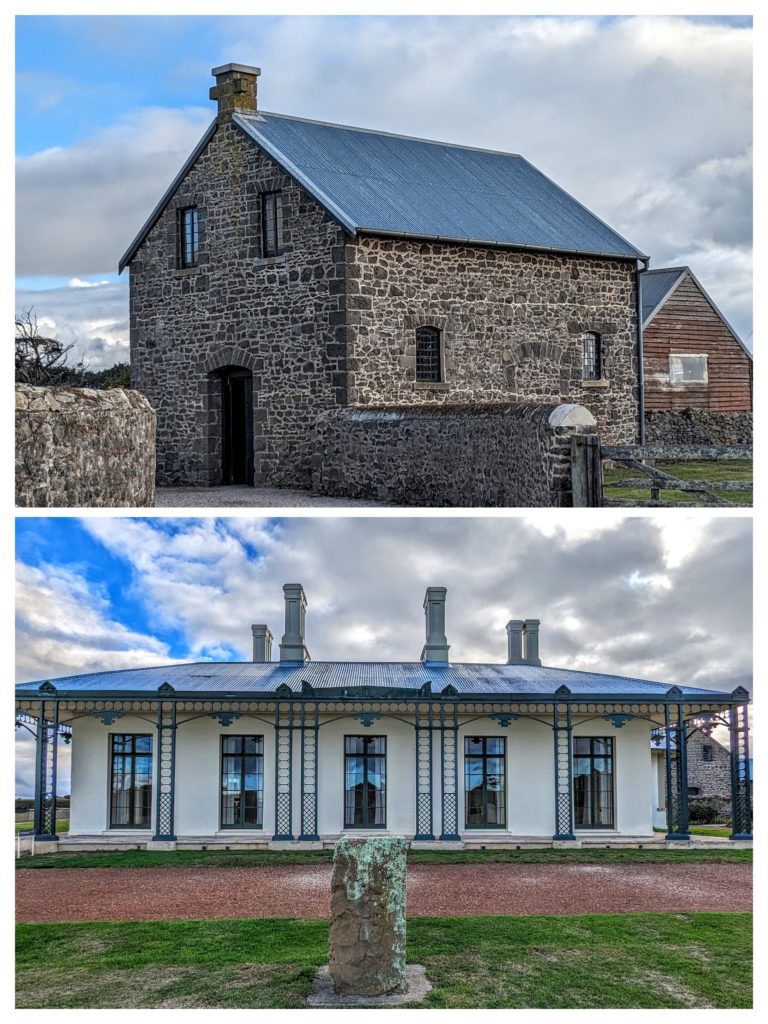
Among several outbuildings is the chapel/schoolhouse, with a cross built into the chimney. The side view of the estate house shows the simple, elegant Regency style, early for it’s time.
The estate is rather large and I spent lots of time reading all the history. When we finally left we found a camping site back at Midway where we had spent April 9th. We had a relaxing evening and saw the sliver of moon over the calm waters of Bass Strait.
April 11 Tarkine Loop (Day 197)
We woke to a sunnier day and had breakfast then headed out to explore the 2 trails that lead out from the campground. The Sinkhole Trail is a loop into the forest supposedly past sinkholes, but we never could identify any, maybe because they are filled with vegetation!
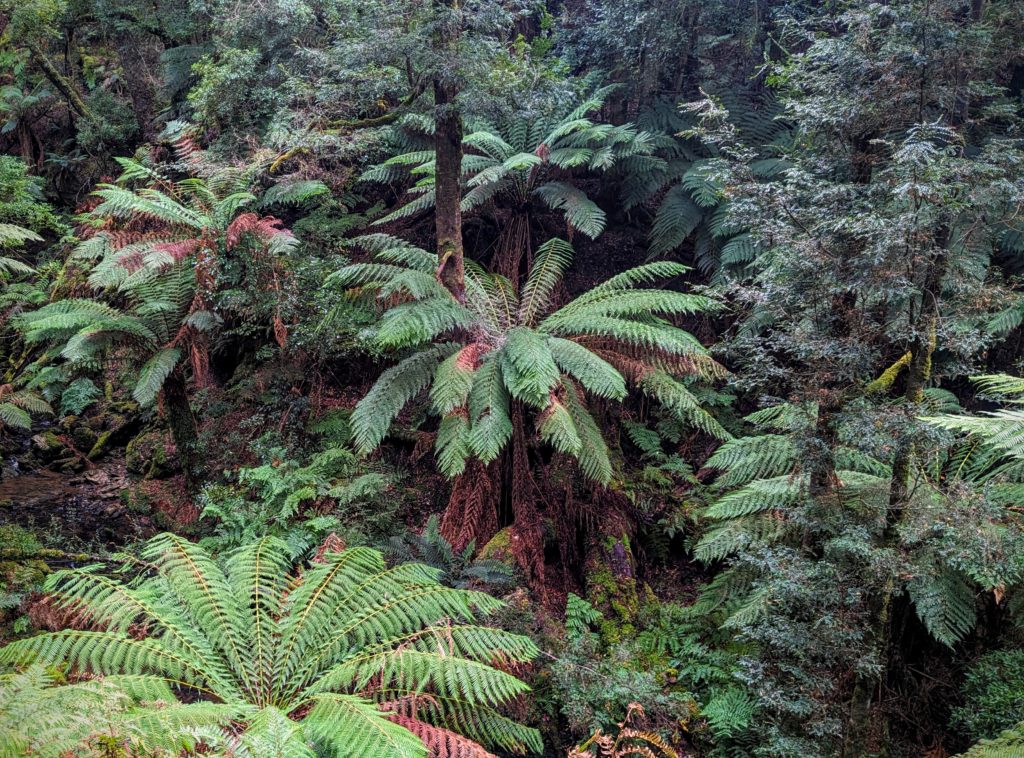
There are tree ferns in Tasmania! Not the same species as New Zealand though.
Besides the Eucalyptus trees, another dominant tree in the rainforest is the Myrtle tree (Nothofagus cunninghamii), not to be confused with the Oregon myrtle (Umbellularia californica). Those common names for species are very confusing!
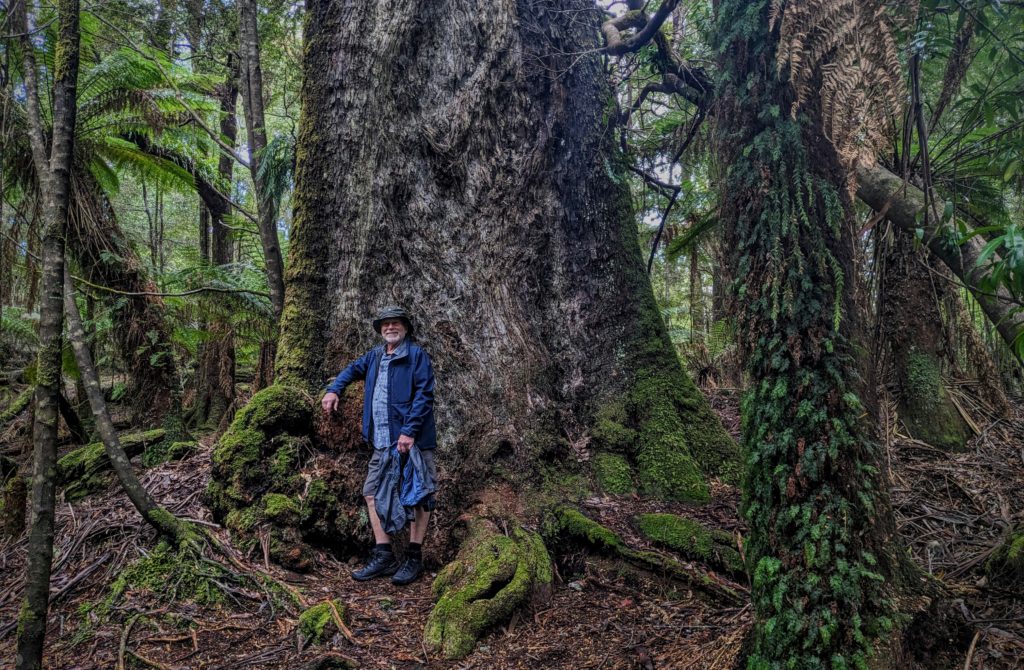
The huge buttressed trunk of the Tasmanian Myrtle on the Julius River Trail cannot be confused with the Oregon myrtle!

The tiny fungi and mosses are just as important as the huge canopy trees!
We returned from our hikes and packed up to continue the tour on the Tarkine Loop Road to the next turnoff at Chisholm Lake, a sinkhole that is filled with water!

It’s a large lake and we heard frogs croaking around the banks!
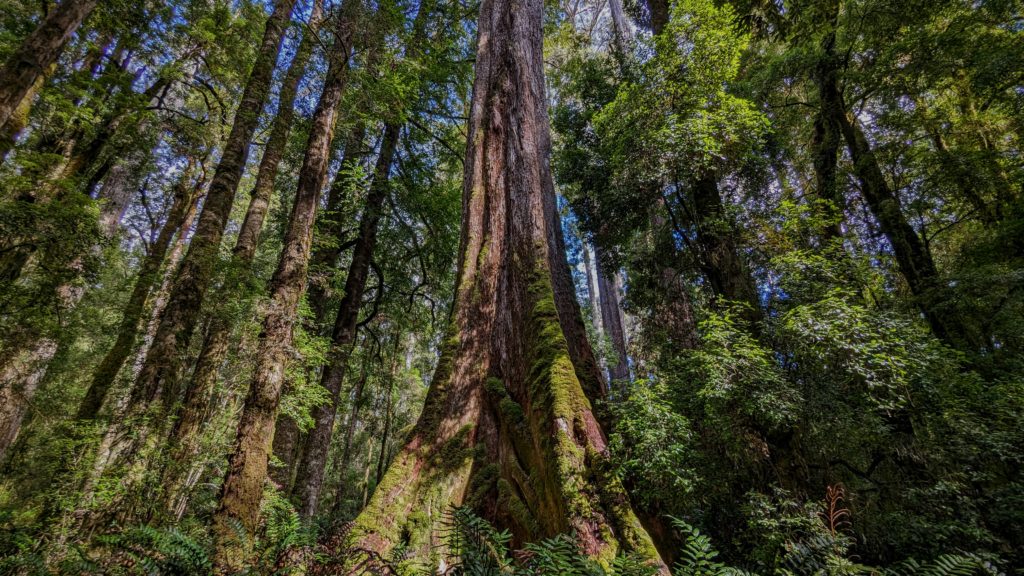
The huge Eucalyptus have buttressed trunks also!
Our last stop was the Trowutta Arch, another sinkhole filled with water and covered with green algae or duckweed deep in a beautiful rainforest grove.
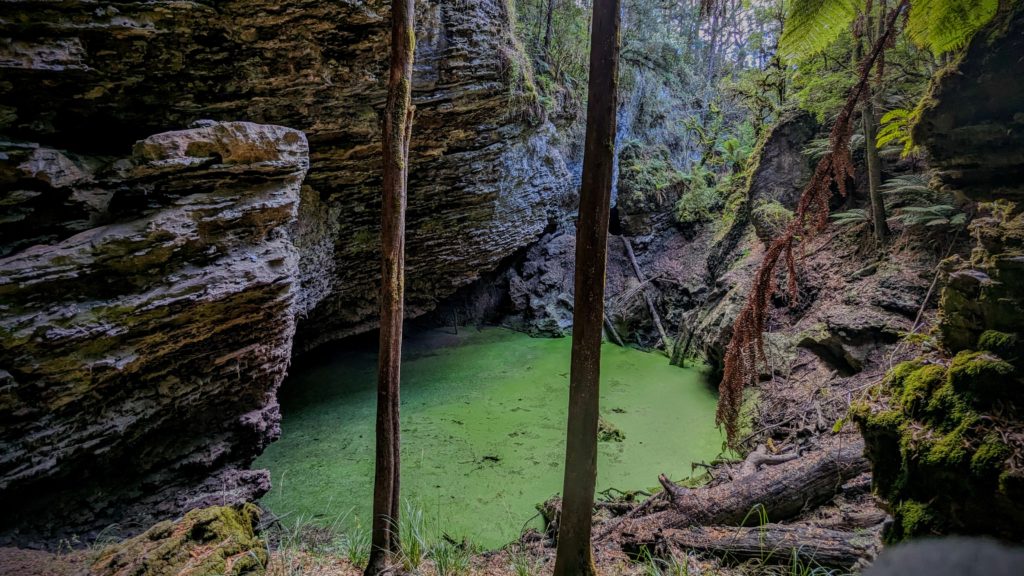
The water filled sinkhole was encircled by steep walls of corrugated rock.
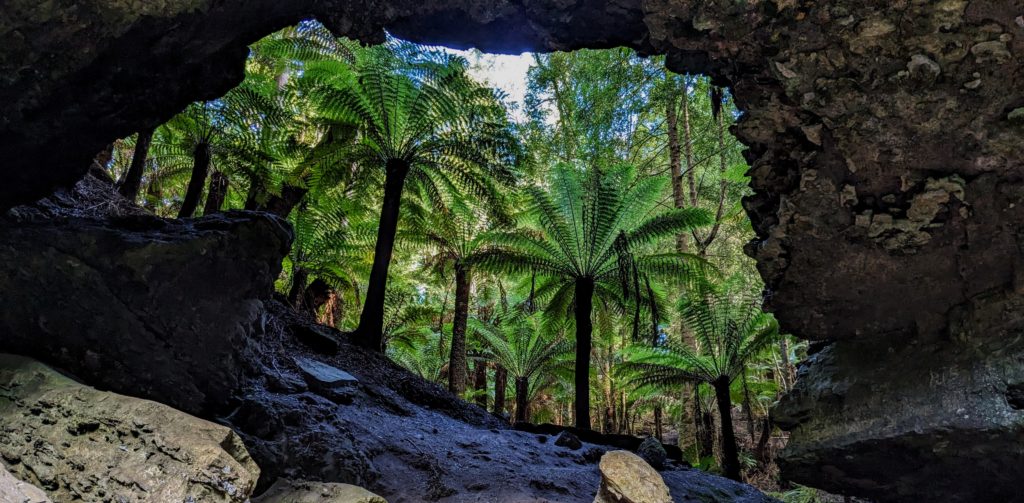
The arch of rock framed beautiful ferns, the common name here is ‘Manfern’.
We finished our loop tour and returned to the town of Smithton near the north coast to spend the night at the free campsite at Tall Timbers, a resort that accommodates campers with a grassy parking area.
April 10 Tarkine Forest (Day 196)
We woke to mixed weather, sunny and beautiful then cloudy and misty! A morning highlight was the moving of the cows. The local dairyman moved his cows to new pasture, right next to the campsite!
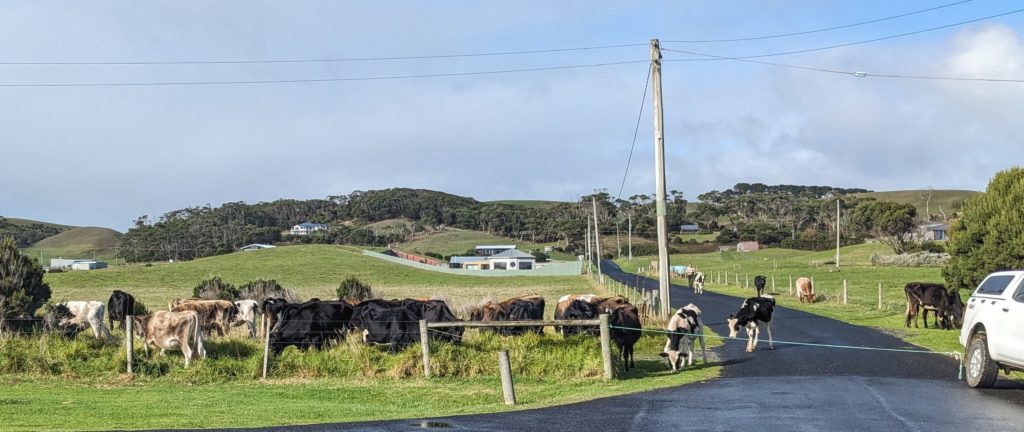
He used rope tied to his truck bumper as a fence to guide the cows around the corner and into their new paddock.
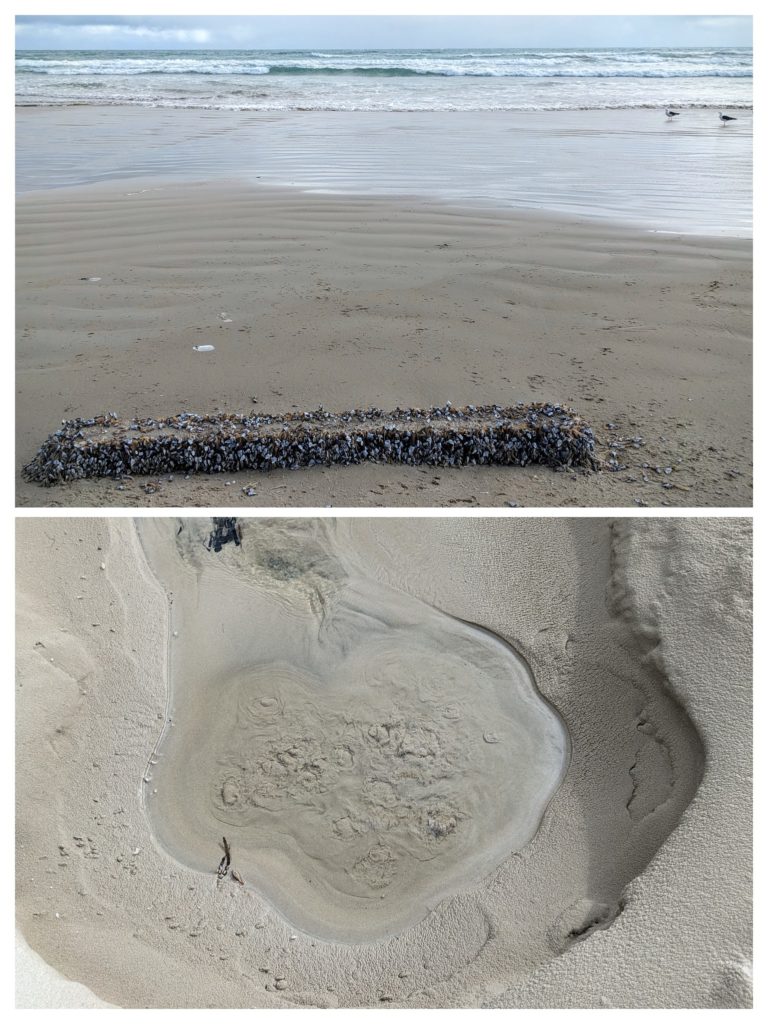
A last walk on the beach in the wind revealed some interesting sights. A bubbling cold water spring and barnacle encrusted flotsam.
We packed up to head out to the Tarkine Forest, the temperate rainforest on the west coast of Tasmania. The first part of the Tarkine Loop follows the west coast south past the “Edge of the World Viewing Platform” looking out at the Roaring 40’s of the Great Southern Ocean! It was roaring today, with sideways rain, so no pictures were taken! Video will be posted to the YouTube channel soon. We turned inland and entered the rainforest, quite a difference from the scrub-grass and rocky landscape along the wild west coast.
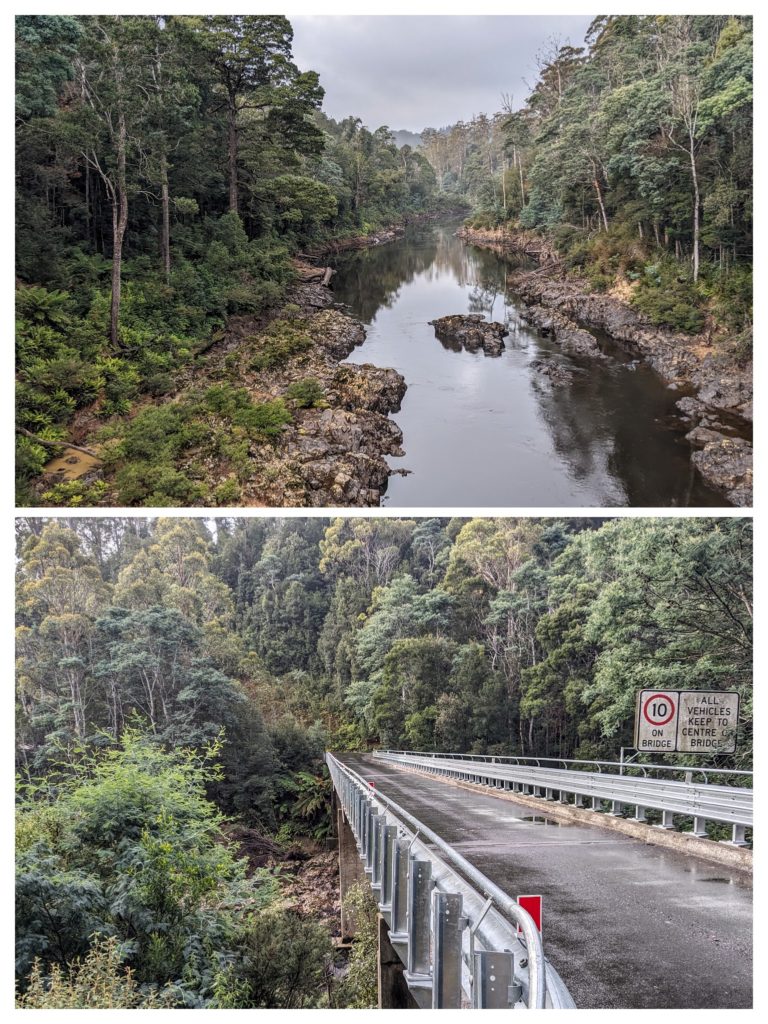
We crossed a river and saw the rainforest in the mist!
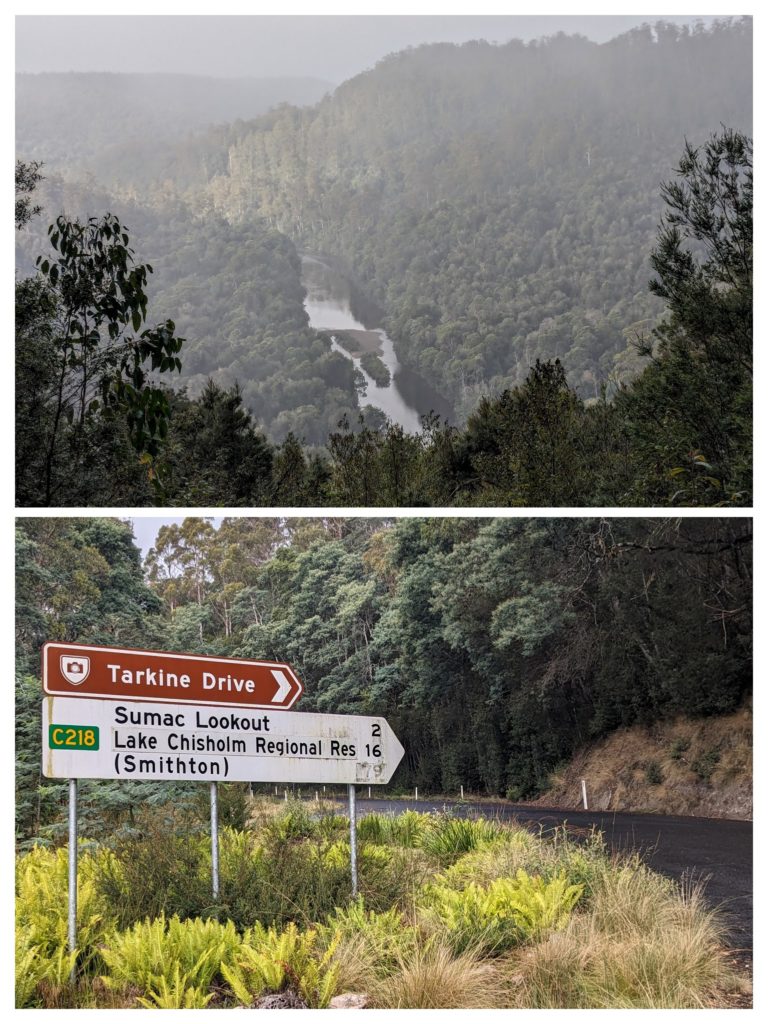
We headed up to Sumac Lookout on the Tarkine Drive. The mist was dense, almost fog, but gave the forest the wash and hue of ‘rainforest’!
We reached our campsite for the night, Julius River, and joined the one other camper to spend the dark night under the canopy of rainforest trees.
April 9 Table Cape Lighthouse (Day 195)
We headed out early this morning, our destination; a free campsite on the west coast near Marrawah. The route is mostly along the north coast and we will pass three capes jutting out into Bass Strait. We decided to visit the lighthouse at Table Cape, the first cape on the route, and visible as a large flat butte just past the large working port town of Wynyard. As we approached the top of the butte through farmland and turned onto the gravel road the last few km we were enchanted with a beautiful stand of summer flowers leading to the lighthouse!
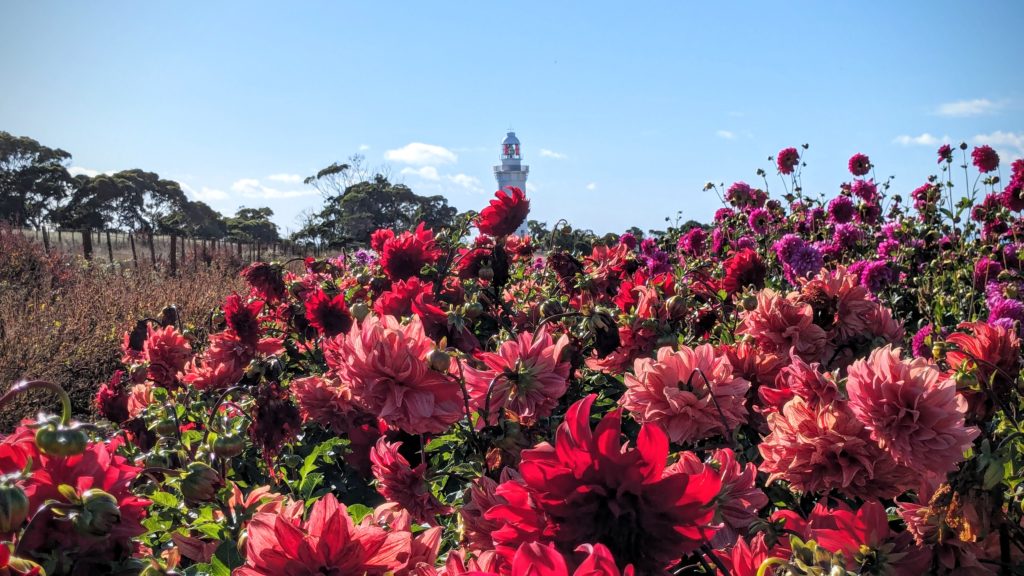
I had to get out and walk among the dahlias!
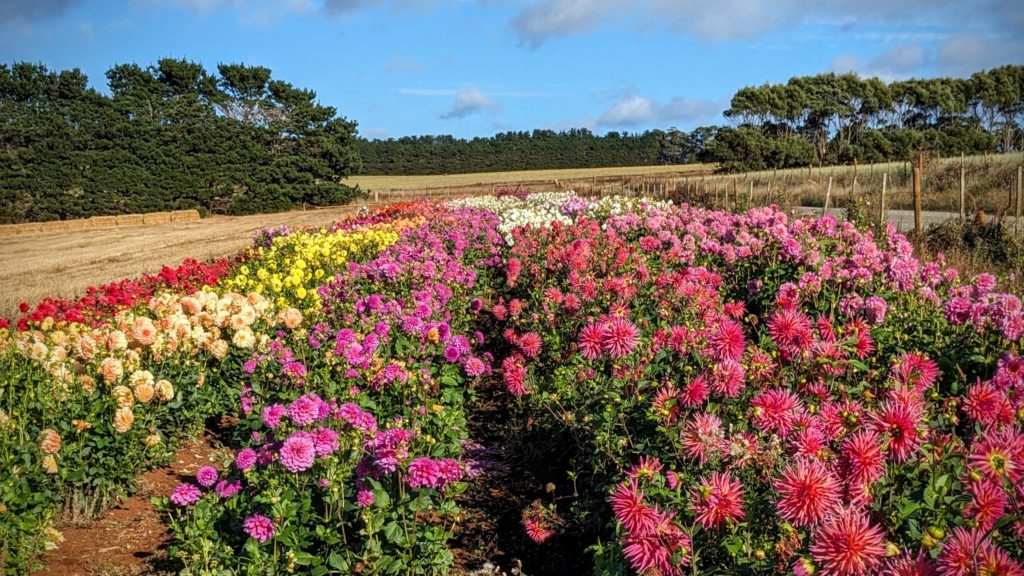
The long rows of colorful flowers overlooked farmland.
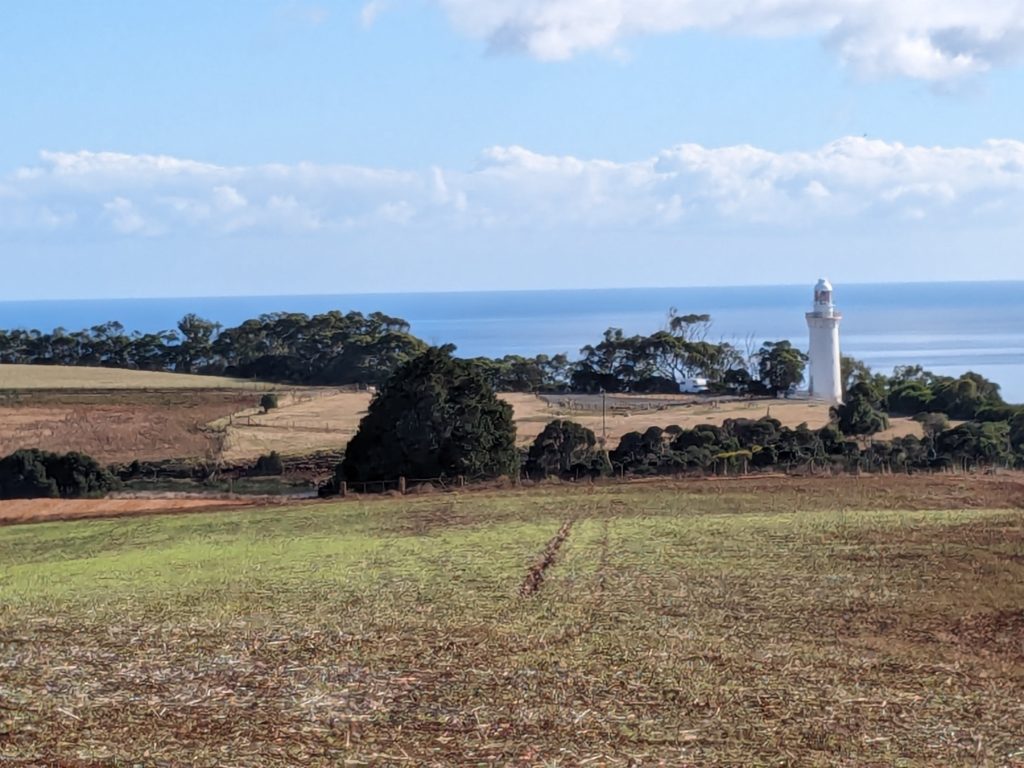
A walk along the high cliffs of Table Cape led to a lookout with a view back towards the lighthouse.

A reader board gives info on the volcanic origin of Table Cape. The farmland on the cape must be beautiful in spring with tulips blooming!
We moved on down the highway and passed the second cape, Rocky Cape, the gravel road to that lighthouse would probably undo the cleaning we just did yesterday! We did stop at a viewpoint however.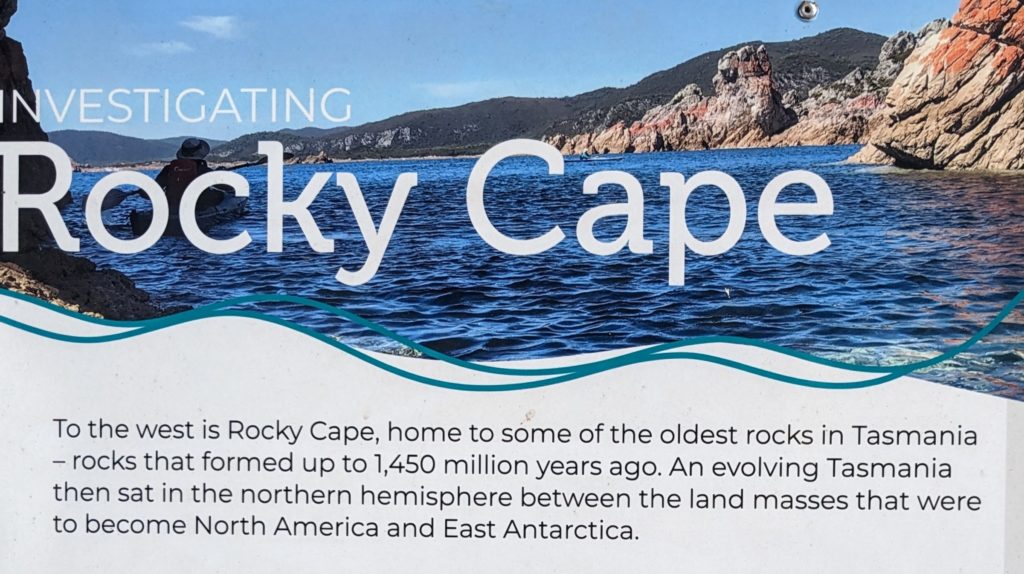

The long peninsula in the distance is Rocky Cape.
We passed the third cape, North Point (no lighthouse) then moved inland to cut across the pointy northwest tip of Tasmania to reach our destination, Green Point Beach. The one hour, 65 km trip from North Point to our campsite was enough distance for the weather to change from the partly cloudy warm north coast to the windy, grey skies and intermittent rain of the west coast!
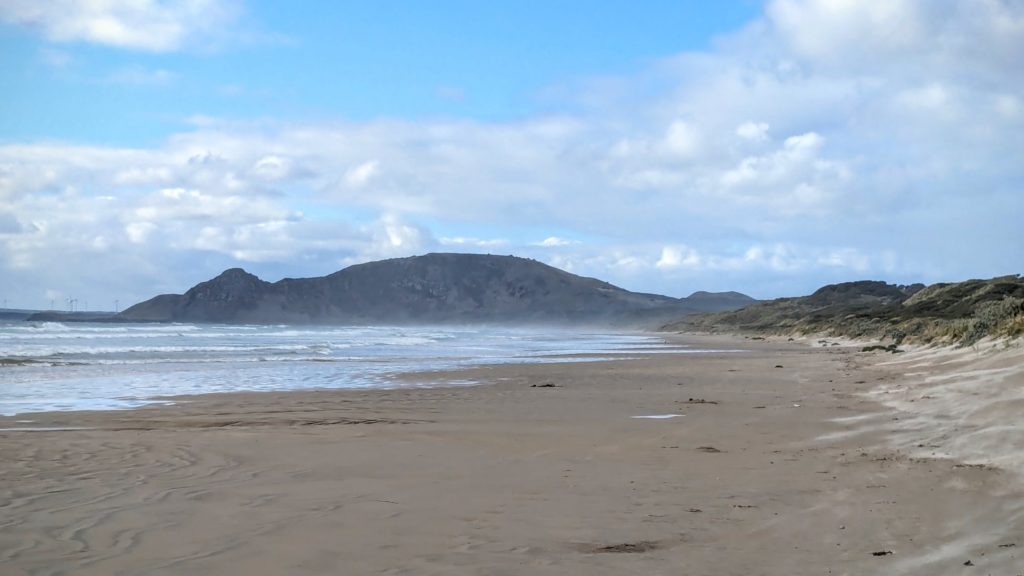
Green Point Beach. Not much green from this view, but enough wind to keep the windmills way on the distant left point of land turning!


























